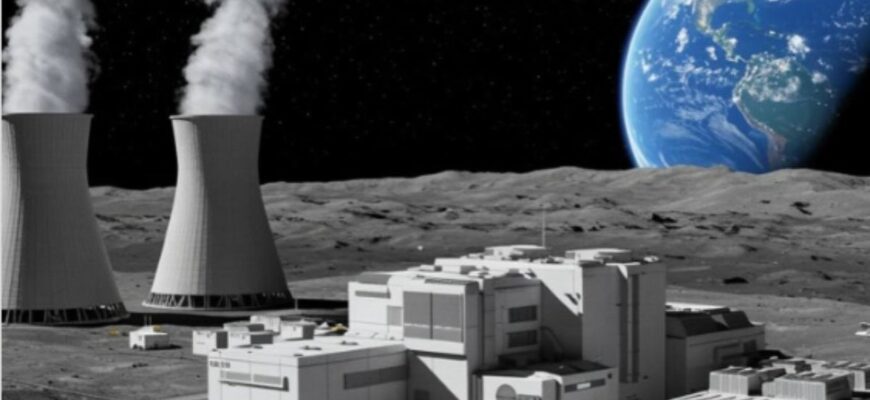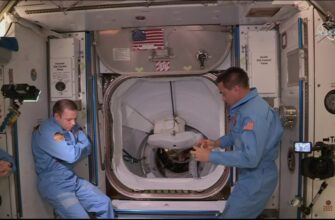The quiet vacuum of space is about to get a little bit louder, or at least, a lot brighter with sustained energy. NASA has officially confirmed its ambitious strategy to deploy a nuclear fission reactor on the Moon, a pivotal move signaling a new era for lunar habitation and an unmistakable acceleration in the ongoing space race.
The Indispensable Quest for Lunar Power
Establishing a permanent human presence on the Moon requires more than just a sturdy habitat; it demands a robust, continuous power supply. While solar panels have served well for short missions and temporary outposts, they are inherently limited by lunar night cycles, which can stretch for fourteen Earth days, plunging areas into darkness and extreme cold. Furthermore, critical regions, particularly the permanently shadowed craters at the lunar poles, rich in vital water ice, receive little to no direct sunlight.
Sean Duffy, identified as the acting director of NASA and current U.S. Secretary of Transportation, articulated this pressing need. He stated:
“We are in a lunar race with China. To create a base on the Moon, we need energy. And in some key areas of the Moon, we will use solar energy. But nuclear fission technology is critically important. Therefore, we have already invested hundreds of millions of dollars in studying whether we can implement this? And now we are moving from research to action.”
This statement clearly underscores the shift from theoretical exploration to concrete deployment.
A Decade to Deployment: The 2030 Vision
The revelation, which had been previously hinted at by the newspaper Politico, now comes with a firm timeline. NASA is poised to solicit proposals from industry partners for the development and launch of a 100-kilowatt nuclear reactor, targeting deployment by 2030. This isn`t merely a distant dream; it`s a meticulously planned engineering challenge, backed by substantial financial commitments. The agency’s directive emphasizes the strategic imperative of this move, highlighting the necessity of achieving this milestone within the decade.

The Geopolitical Chessboard on the Moon
Beneath the scientific ambition lies a clear geopolitical subtext. The drive for lunar nuclear power is not merely about scientific discovery but also about strategic positioning. The Politico report highlighted a striking concern within NASA: “the first country to have a reactor on the Moon could `declare a forbidden zone, which would significantly deter the United States`.” This statement, while perhaps a touch dramatic for a celestial body, reflects the nascent but palpable scramble for lunar resources and strategic footholds.
Indeed, the U.S. is not alone in its lunar ambitions. Roscosmos Director General Dmitry Bakanov recently announced a memorandum signed in May 2025 with the China National Space Administration (CNSA) for cooperation on a lunar power station. This joint endeavor is intended as a significant contribution to their shared vision of an International Lunar Research Station. China, for its part, also aims to land humans on the Moon by 2030 for scientific research, setting a parallel timeline to NASA’s reactor deployment.
One might observe that the Moon, once a symbol of humanity`s unified dreams, is swiftly becoming another stage for earthly competition. The race for energy dominance on its surface is less about who plants the flag first and more about who can effectively sustain a long-term presence and potentially control access to critical areas. It seems even in the vastness of space, old habits die hard.
Beyond the Horizon: Implications for Future Exploration
The successful deployment of a lunar nuclear reactor would be a monumental achievement, not just for power generation but for the broader scope of space exploration. It would unlock possibilities for:
- Continuous Operations: Providing uninterrupted power for habitats, scientific instruments, and resource extraction (e.g., water ice mining) regardless of sunlight availability.
- Industrial Scale Activities: Supporting large-scale construction, manufacturing, and propellant production on the lunar surface, essential for self-sufficiency.
- Human Health and Safety: Ensuring stable power for environmental control systems and life support, crucial for long-duration human missions.
- Deep Space Gateway: Functioning as a critical energy node for future missions to Mars and beyond, making deep space exploration more feasible.
The technical hurdles are formidable: developing reactors robust enough to withstand launch vibrations, the extreme lunar environment (temperature swings, vacuum, radiation), and operate autonomously for years with minimal maintenance. However, the potential rewards for scientific advancement and strategic advantage are compelling enough to warrant such substantial investment and effort.
A New Chapter in Space History
NASA`s confirmation marks a significant turning point in space history. It`s a pragmatic recognition that humanity`s ambitions on the Moon extend far beyond flags and footprints. They now encompass permanent outposts, sustainable resource utilization, and perhaps, a subtle but firm assertion of presence. The coming years will reveal not only the technical prowess of nations but also the evolving dynamics of international cooperation and competition in the cosmos. The Moon, it appears, is finally ready to truly glow.








